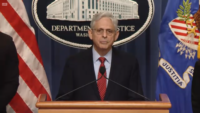The new guidance is sorely needed, says Marc Levitan, head of research and development for the National Windstorm Impact Reduction Program of the National Institute of Standards and Technology. He was lead investigator for a recent NIST technical investigation that put forth 16 recommendations addressing the lack of warning systems and guidance for tornado-resistant design and construction.
The most important recommendation, says Levitan, is the development and adoption of nationally accepted performance-based standards for tornado-resistant design of buildings and infrastructure. If NIST has its way, hospitals and other critical facilities will remain operational even in an EF-4 tornado. NIST also recommends developing national standards for tornado shelter retrofits.
NIST's objectives have residential structures withstanding EF-2 tornadoes—as does Moore's updated code. "Our research points out that upgrading structures to a 135-mph limit would improve the behavior of all structures," says Levitan.
Opposing Camps
Because it is impossible to predict a tornado's occurrence, strength and path, some engineers think storm shelters are a better approach than stricter codes, which add cost to construction. There are generally two camps regarding codes.
"The tornado rift is a difficult one," says Ronald O. Hamburger, senior principal in the San Francisco office of structural engineer Simpson Gumpertz & Heger. "The risk of any one building in Missouri, Kansas or Oklahoma experiencing a tornado is on the order of 1 in 10,000 years, which is why we don't typically require these [hardenings]."










Post a comment to this article
Report Abusive Comment